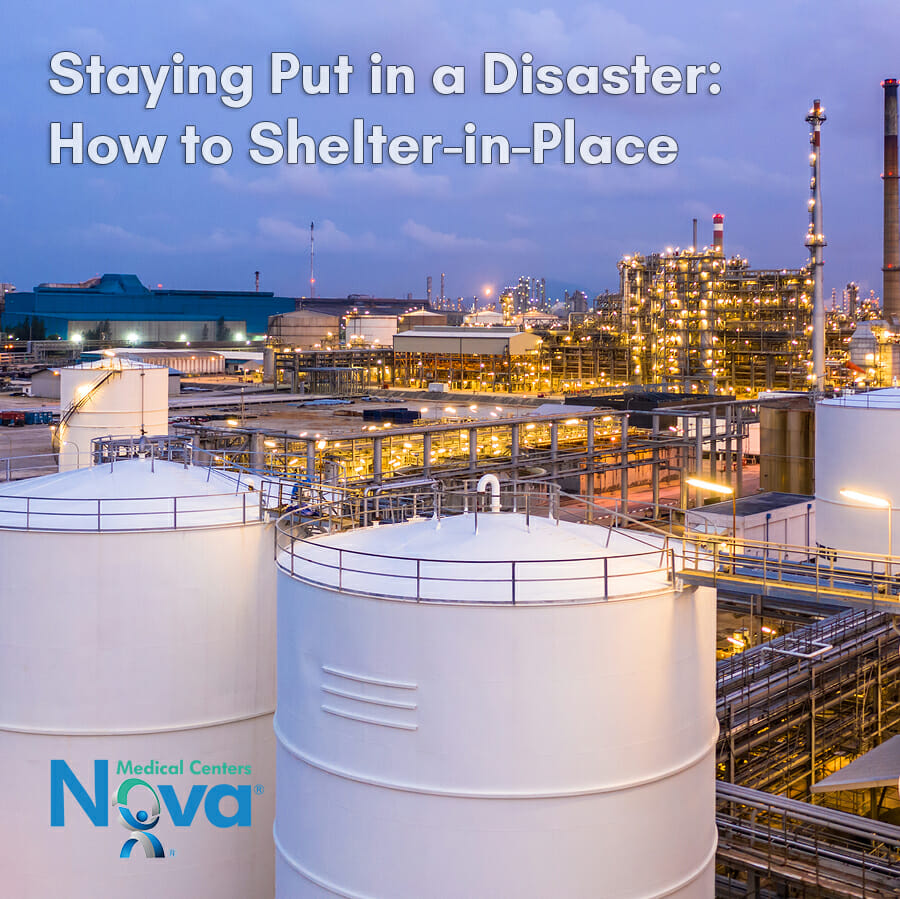
Choosing to take shelter during a disaster is a necessary step for survival. Shelter-in-place is a precautionary measure and one of the instructions you may be given in an emergency, whether it’s a severe weather alert, or a chemical, biological, or radiological contamination that may have been released into the atmosphere.
During some disasters, evacuating your home or business may put you at greater risk than staying put. There may be some situations when it’s simply best to stay where you are, whether you are at home, at work, or somewhere else. To effectively shelter, you should first consider the hazard, and then choose an area in your home or building that will protect you.
The safest place to seek shelter and instructions will vary depending on location.
At home:
- Close and lock all windows and doors.
- Go to an interior room without windows that are above the ground floor level. In case of a chemical threat, an above-ground level room is best because some chemicals are heavier than air, and may leak into the basement even if the windows are closed.
- Turn off electric fans and heating/air conditioning systems.
- Make sure your vents and fireplace flue are closed.
- Retrieve your disaster supplies kit.
- Bring your family and pets inside. Be sure that you have additional food and water supplies for your pets, and make arrangements for them to use the restroom inside your room.
At work:
- Close the business.
- Bring everyone inside. Shut and lock the doors.
- Turn on call-forwarding or alternative answering phone systems. If the business has a voicemail, change the recording so that it indicates that the business is closed.
- If there are any clients, visitors, or customers in the building, encourage them to stay inside and give them directions of the shelter-in-place procedures.
- Write down the names of every person in the room. Call your business’ designated emergency contact and let them know who everyone in the room is, and their relationship to the business (whether it be an employee, visitor, customer, or client).
- Gather essential disaster supplies – nonperishable food, bottled water, battery-powered radios, flashlights, batteries, plastic garbage bags, etc.
- If there is a danger of explosion, close the window, shades, blinds, and/or curtains.
- Keep listening to the radio or TV until you are told all is clear or you are told to evacuate.
Finding out what can happen is the first step to being prepared. You should develop a disaster plan within your home or workplace. Consider practicing drills so that in case of an emergency, you know exactly what to do. You should also have an emergency package – this should include an adequate water supply (at least three days’ worth), batteries, flashlight, first-aid kit, scissors, duct tape, paper towels, non-perishable food, a battery operated radio, and cell phone chargers.
During a shelter-in-place alert, no one is to leave the area until you are given the “all clear” from authorities. Shelter-in-place can last a few hours or even longer. It’s important to try to stay calm and be patient. Local authorities may not be immediately available to provide information about what is happening and what you need to do. However, you should still watch TV, listen to the radio, and check the internet for news and updates.
Written by Dami Falade



